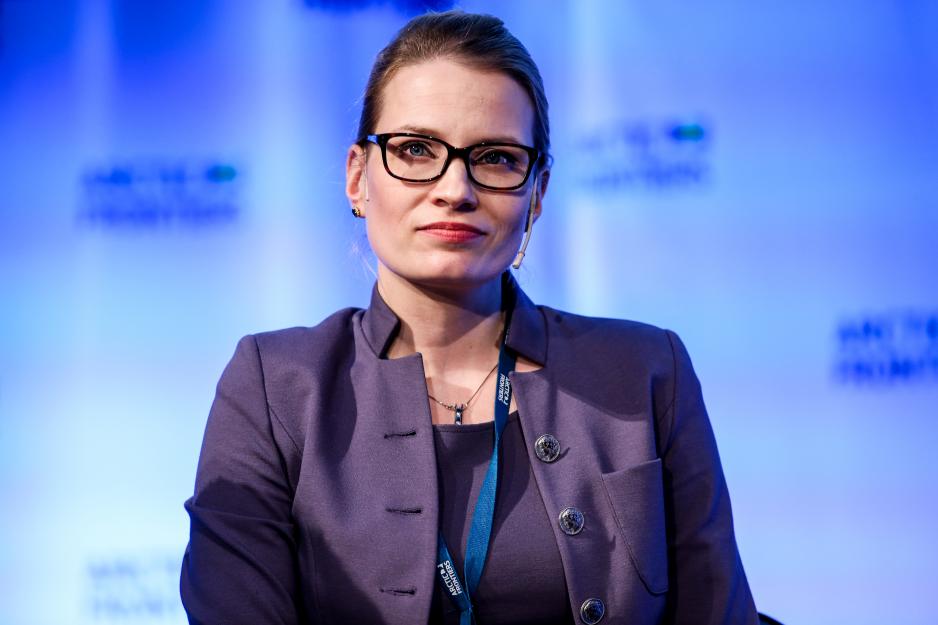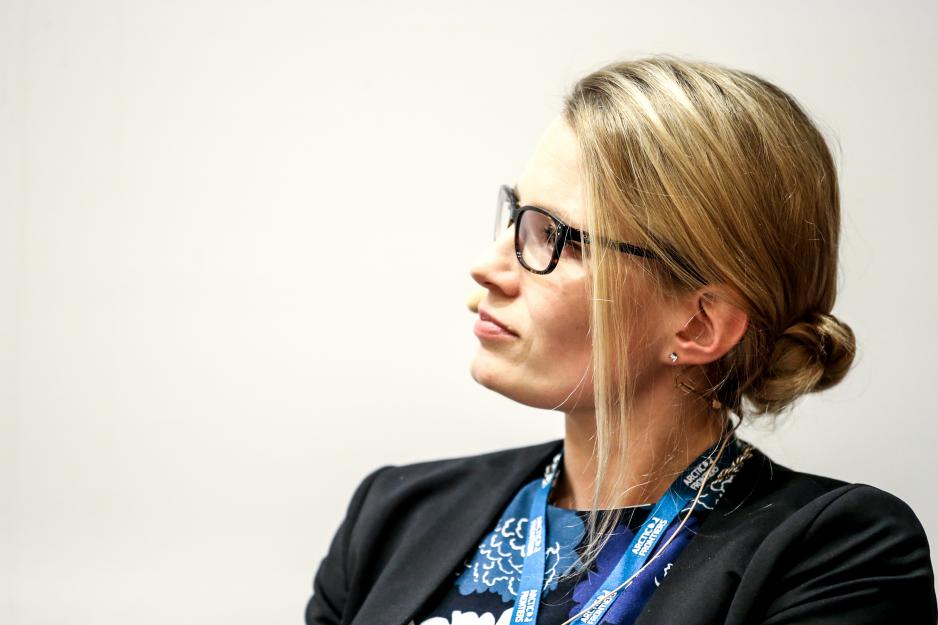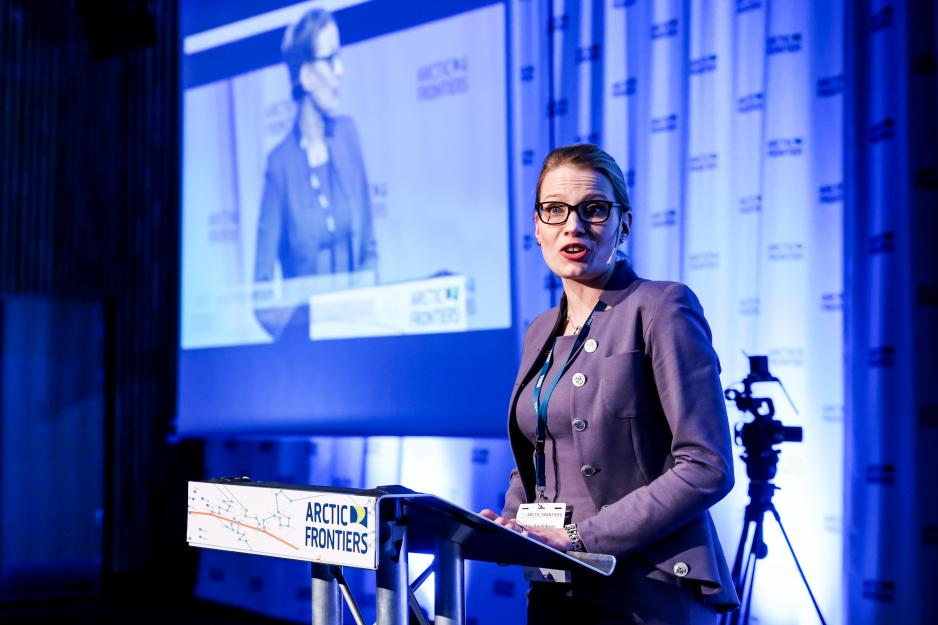Digital Arctic Will Be A Turning Point

To Anu Fredrikson, the Arctic is ome. A home she is passionate about, knows well and one that sorely needs better data cables to face the future. – Better connections in the Arctic will be a turning point, says the Director of the Arctic Economic Council secretariat.
Her enthusiasm for the High North is almost tangible. We are approaching the end of Arctic Frontiers, the international hub for dialogue and human connection in the Arctic. a scene that has focused strongly on one of Anu’s passions this year – digital connections in the North.
- We are very lucky in the Nordic part of the Arctic, as we have good internet connections. However, if you go to parts of Greenland or North America, the situation is rather different, she says.
What are the consequences of being on the outside of the digital roadmap? What happens if the Arctic is disconnected from the digital development, without connections to the rest of the world economy, one that is more connected than ever?
- Digitalization is the biggest global trend, and if we are left out in the Arctic, we will lag behind in all areas. I immediately think of security as one aspect; in particular when it comes to shipping, search and rescue. However, I also think about the general development of society as a whole. Good internet connections matter both economically as well as socially, Fredrikson says.
She describes how extended broadband infrastructure may improve everyday life for remote communities in all areas from health services to online education programs and, not to forget, faster response time should emergencies occur. And perhaps more important than ever; how access to the global economy may boost entrepreneurship and new business ideas.
- There are incredible options. Just think about how authorities may spread information to their citizens, connect with them more closely, and especially provide them with more choices and opportunities in their own lives, the director says.

Must start now
If concrete measures are taken to improve connections in the Arctic, that will represent a major breakthrough, not only for the region but also globally.
- We must aim to build an extensive network all across the Arctic, a region connecting three whole continents. It should not matter where you live. I have met people who have accomplished remarkably innovative business ideas from small communities where you would think it impossible. Because they have internet access, Fredrikson says.
She says that Quntillion has constructed a data cable to Northern Alaska, a connection that may totally transform remote communities, where people can trust stable internet connections and stable prices. But what will it take to digitalise the Arctic?
- If plans to connect this cable from Alaska to Asia proceed, and if the plans of a cable through the Northwest Passage to Western Europe proceed, and if we have a cable from Finland to Northern Norway and further through the Northeast Passage to Asia, there will be a situation in which we have submarine cables all across the Arctic, Fredrikson says.
When this is in place, the Arctic can start offering the shortest route and an alternative for data traffic from Asia to Europe. That will also allow increasing efficiency as well as new trade routes.
Cold and renewable energy
The Arctic remains one of the coldest places on earth while at the same time constituting the lowest risk environment for data centers. And the colder an area is, the less energy is needed. The competitive advantages of placing large computer centers in the region are significant, given the tremendous potential for renewable energy, provided the Arctic is connected with the rest of the world.
- When the cables are in place, we can build data centers. The Arctic is perfect for this, given the resources that lie in renewable energy, Anu says.
The AEC has in recent years developed the ‘Top of the World Arctic Broadband Summit’; a conference gathering businesses, politicians, technology experts and research in order to discuss the opportunities for a connected Arctic.
- There are many who see the opportunities and the need, and it is my understanding that we must emphasize dialogue and cooperation. So we have invited businesses to join this conferences in order to demonstrate the specific needs there are. It always starts with and is all about getting the discussion started, to show politicians and business what these network opportunities consist of, the Director says.
The third broadband conference will take place in Sapporo, Hokkaido, in the northernmost part of Japan, at the end of June.
- We have to show each other where we stand when it comes to this development, she says an emphasizes that public-private partnership (PPP) may be one of the funding models for broadband in the Arctic. This involves the public’s facilitating cooperation and funding in collaboration with private actors in order to reduce risk in the investment phase.
- There is a big need, but only four million people live in the Arctic. There are not enough tax payers to fund such a major digital initiative, which is why broadband development must be approached in the same way as one does with other infrastructure investments, Fredrikson says.

Who is in responsible?
It is not easy to pin the responsibility for creating the digital connections required for the entire Arctic region on someone, neither on the state, the people living there or private business. Nevertheless, when the Finnish government decided to support broadband development in areas where commercial offers did not exist, it was a huge success.
- The used the PPP model, through which broadband companies could rely on partial public funding so that they could dare take the risk in small, remote communities, Fredrikson says.
She knows that technology has changed things for people; that modernization of farming has lead to an opportunity to improve efficiency in farming for farmers in Finland.
- Being able to connect makes a significant difference in both smaller and larger contexts, Fredrikson says.
Dialogue develops
To Anu Fredrikson, this year’s Arctic Frontiers has been a very good conference. When comparing her first attendance back in 2012 with this year’s conference, it is clear that the concept is developing in the right direction.
- Arctic Frontiers has been professionalized and the business part of it has brought in many current and relevant speakers who matter to the dialogue. It has become a better meeting place for agenda-setting and I see a clear development in the thematic discussions, she says.
Current themes are concretized, initiatives are broader applied and people get acquainted with each other and with what goes on in the various regions.
- The Arctic is home. I grew up in Oulu and live in Tromsø. This is an incredibly exciting area to work with and it is amazing to be allowed to work to create conditions for a sustainable development of the North, Anu Fredrikson says in closing.
Les artikkelen på norsk
